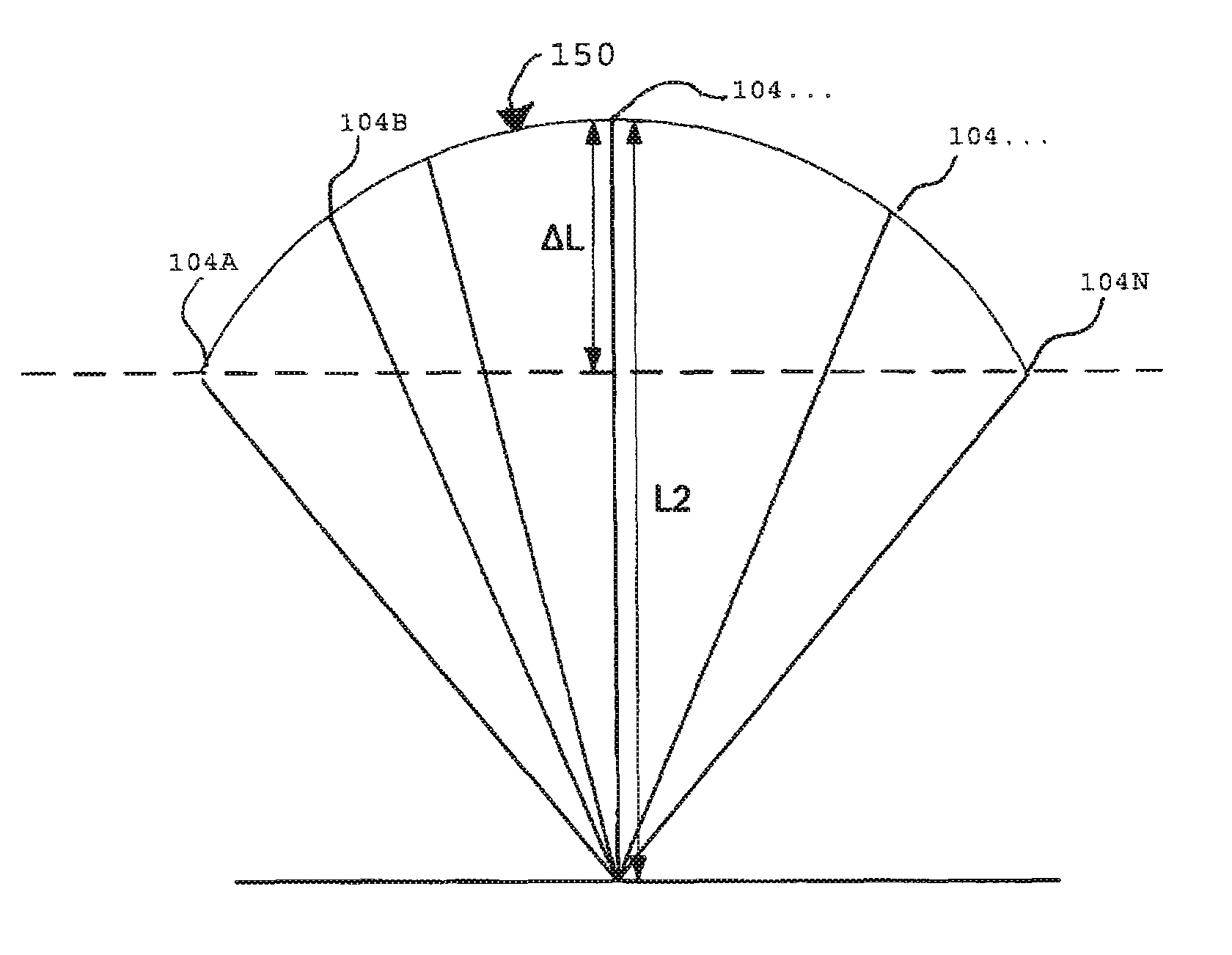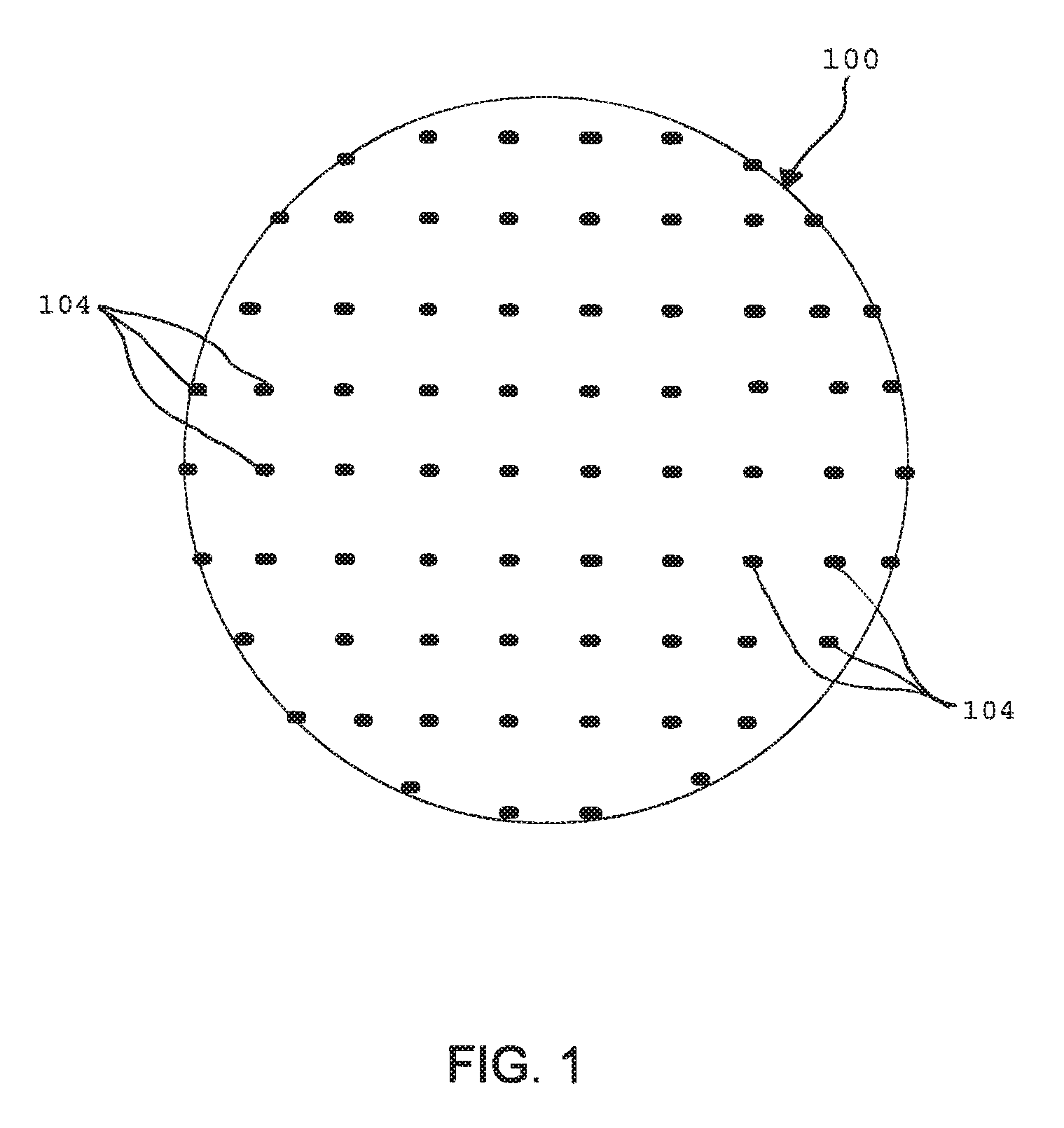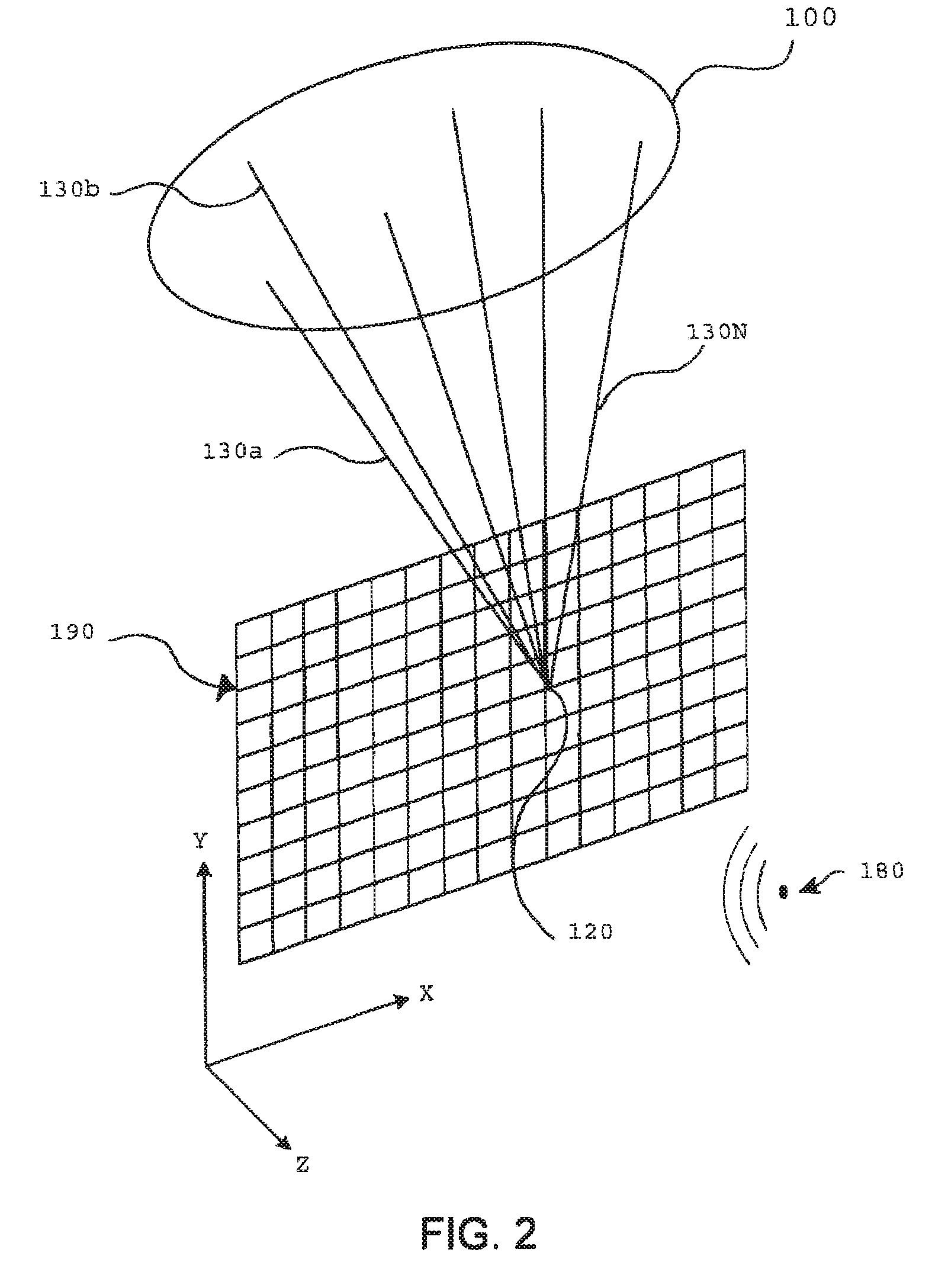Passive reflective imaging for visualizing subsurface structures in earth and water
a reflective imaging and subsurface technology, applied in seismic imaging, instruments, measurement devices, etc., can solve the problems of increasing the cost of seismic imaging, difficult to utilize active seismic sources in rugged terrain or in populated areas, and no practical acoustic lens has been developed to allow for focusing on subterranean objects using ambient noise. to achieve the effect of increasing the signal-to-noise ratio
- Summary
- Abstract
- Description
- Claims
- Application Information
AI Technical Summary
Benefits of technology
Problems solved by technology
Method used
Image
Examples
Embodiment Construction
[0018]While the invention is susceptible to various modifications and alternative forms, specific embodiments thereof have been shown by way of example in the drawings and are herein described in detail. It should be understood, however, that it is not intended to limit the invention to the particular form disclosed, but rather, the invention is to cover all modifications, equivalents, and alternatives falling within the scope of the invention as defined by the claims. For instance, while in certain implementations as described below, the present invention utilizes passive seismic signals to generate subterranean images, some aspects of the present invention may be utilized with active seismic acquisition where one or more active seismic sources (e.g., explosives, vibrators, etc.) are utilized.
[0019]FIG. 1 depicts a physical layout of a seismic array 100 in accordance with one implementation of the present invention. In the present implementation, a number of data acquisition module...
PUM
 Login to View More
Login to View More Abstract
Description
Claims
Application Information
 Login to View More
Login to View More - R&D
- Intellectual Property
- Life Sciences
- Materials
- Tech Scout
- Unparalleled Data Quality
- Higher Quality Content
- 60% Fewer Hallucinations
Browse by: Latest US Patents, China's latest patents, Technical Efficacy Thesaurus, Application Domain, Technology Topic, Popular Technical Reports.
© 2025 PatSnap. All rights reserved.Legal|Privacy policy|Modern Slavery Act Transparency Statement|Sitemap|About US| Contact US: help@patsnap.com



